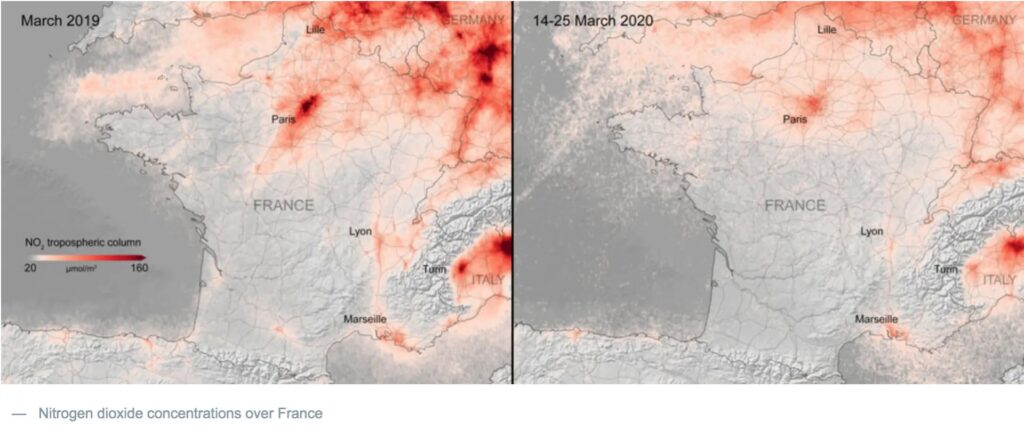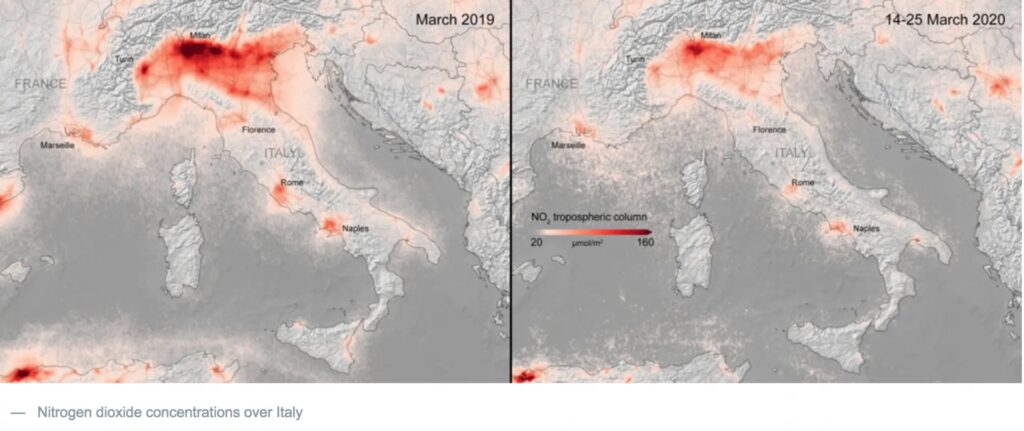From Pandemic to Positive affect. This is becoming a trending topic amongst the industry pioneers, yet how are they related? Here’s our take on what the catalyst could be and indeed how if any impact it’ll have on the future of mobility, the global community and the shift in mindset.
Many have already read the statistics surrounding air pollution – as the greatest killer of humanity – many have been actively preaching about the long term affects of air pollution in cities and the respiratory affects it has on us all (reducing a lifespan of 2-3 years). So with this in mind, does it create a link between how the coronavirus affects us? Let’s dig deeper… the governments, WHO and other scientists are proclaiming Covid-19 affects the elderly and those with pre-existing ailments – those who have been subjected to the poor air quality for decades – as more of us are evermore aware of air pollution, air quality, CO2, hydrocarbons, CO amongst other toxins, it’s made us think what affects has this pandemic had on our environment and the air we breathe.
Here are some fascinating statistics:
In The Guardian (7th April 2020) “Air pollution is linked to significantly higher rates of death in people with Covid-19, according to analysis.
The work shows that even a tiny, single-unit increase in particle pollution levels in the years before the pandemic is associated with a 15% increase in the death rate. The research, done in the US, calculates that slightly cleaner air in Manhattan in the past could have saved hundreds of lives.
Given the large differences in toxic air levels across countries, the research suggests people in polluted areas are far more likely to die from the coronavirus than those living in cleaner areas. The scientists said dirty air was already known to increase the risk of acute respiratory distress syndrome, which is extremely deadly and a cause of Covid-19-related deaths, as well as other respiratory and heart problems.” and it continues, “A small increase in exposure to particle pollution over 15-20 years was already known to increase the risk of death from all causes, but the new work shows this increase is 20 times higher for Covid-19 deaths.”

In Time Magazine this month, reporter Justin Worland wrote, “In China, the world’s largest emitter of greenhouse gases, carbon dioxide emissions declined by a quarter in mid-February from a few weeks earlier, according to an analysis published in Carbon Brief. Scientists recorded similar declines in other pollutants like nitrogen dioxide and particulate matter in the country, which has spent years trying to clean the air in smog-choked cities. “In terms of a shift or a change that really happened overnight, this has been unprecedentedly dramatic,” says Lauri Myllyvirta, author of the Carbon Brief report and lead analyst at the Centre for Research on Energy and Clean Air.”
Adding to our question, a confirmation is announced, “In theory, this sharp decline in pollution and carbon emissions is a positive development for the planet and the humans who live on it. For one, air pollution contributes to millions of deaths across the globe every year, aggravating cardiovascular disease and respiratory health. Clearer air may also deliver some brief relief to those suffering from COVID-19, making it easier to breathe for patients who are struggling, though health experts say that years of exposure to pollution has likely made many people more susceptible to the disease. “The damage is already done,” said Sascha Marschang, acting secretary general of the European Public Health Alliance in a statement. “Years of breathing in dirty air from traffic fumes and other sources will have weakened the health of all those who are now embroiled in a life or death fight.”

What do the stats look like for China – one of the largest contributors to air pollution? – carbonbrief.org, reports “Overall, the figures reinforce an estimate that China’s carbon emissions fell by around 25% over a four-week period, as outlined below, equivalent to around 200m tonnes of CO2 (MtCO2). Demand slowly returned to normal levels over an extended seven-week period, bringing the reduction so far to around 250MtCO2, with emissions some 18% lower than usual levels.”
Whilst these results are temporary, it raises several other questions:
- Will the world as a global community pay more attention to air pollution?
- Will it become a rolling trend to be conscious and make change?
- Will we be more effective online and avoid unessential travel?
Although what I am about to say regarding this crippling pandemic is far from a flippant comment, I see incredible positive from this drastic negative. What Covid-19 has done for this little world of ours, is brought us all together, shifted our minds towards one cause, one dedicated focus, and overrun every conversation at every dinner table around the globe. What would happen if (at the back end of this) we were to continue this rolling momentum of accepting change and focused on air quality? This naturally feeds a sustainability discipline, and could quite positively deliver a better world for all.

Over recent weeks, the team at ONE MOTO and I have been discussing with customers, industry leaders and government officials in the UAE about the affects vehicles have on air quality in this country, I’ve written previous articles about air pollution and the affects Motorcycles have on our environment, and the one that still shocks me is the CO2 produced by 12,000 motorcycles, not only are they 16x more harmful to the environment that SUVs or busses (if they are well maintained), 50x more damaging if they aren’t maintained to factory standards, they produce over 8,000% more Carbon Monoxide… all that aside, the one statistic that shock me:
It would take over 273,000 trees, grown for 10 years to sequester the CO2 produced by the 12,00 motorcycles, each year.
That’s only 12,000.
Consider the two-wheeled transportation in other parts of the world:
India 37million motorcycles
Pakistan 20 million
Africa 1 million
These numbers are staggering, considering the calculations. What does 273,000 10 year old trees look like? I’m not sure, and if we carry on as we are, none of us will ever know.
What would the world look like if we switched to electric, created an inter-connected society of vehicles, people and data? That question is what started our journey, and it’s an answer we are working towards each day.
Our initial mission in the UAE is starting with the ‘switch’ for last-mile, food delivery operators, grocery delivery companies to electric. What would this look like to a relatively small and highly populated city like Dubai and Abu Dhabi? Once we’ve studied the positive affects of a smart city initiative, working with the RTA, we’ll be able to implement change to every city throughout the world. It takes vision tenacity and a community working together to make change.
So, from ‘Pandemic to Positive’ if we all focus on one single problem we’ve proven; collaboration, participation and commitment does make a difference.
Thank you for your time reading this article, I do respect it.
Adam Ridgway
Founder, CEO
one-moto.com



